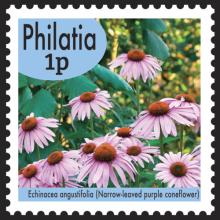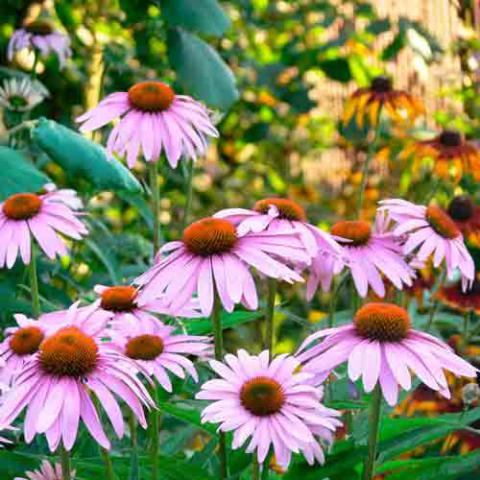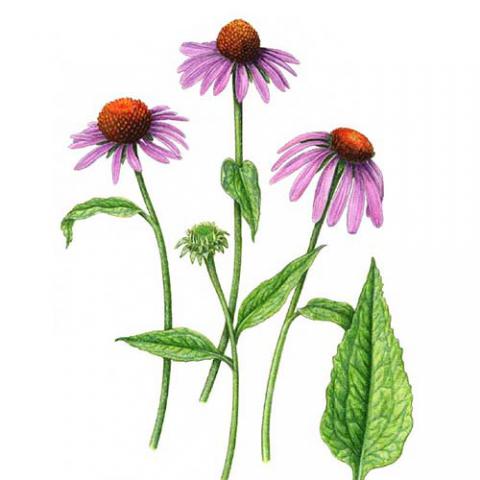NAME(S)
TAXONOMY
PLANTAE ID
THERAPEUTIC
Philatia
Issued:
Stamp:
Echinacea angustifolia
Philatia
Issued:
Stamp:
Echinacea angustifolia
Philatia
Issued:
Stamp:
Echinacea angustifolia
Genus species (Plantae): Echinacea angustifolia
Elk root, black samson echinacea, or narrow-leaved purple cornflower refers to Echinacea angustifolia. Its native range stretches from Manitoba in the north to Texas in the south. It is an herbaceous plant, as all species of echinacea are. It grows up to 28 inches in height, extending from a branched taproot. Its stems and leaves are hairy while other species are smooth. Its flowers resemble a cone in shape.
Echinacea angustifolia is so named in the vernacular due to the fact that elks knowingly consume the plant when sick or wounded. Elk root is an herb important to folk medicine practices of Plain Indians, such as the Cheyenne and Apache.
Use:
It displays analgesic properties, and thus has been in use as a pain reliever for external wounds and internal inflammation, including allergies, rheumatism, and arthritis.
Research on elk root has been promising. It is one of the species of echinacea believed to enhance the immune system and improve immune responses. In particular, it is good for the respiratory system. It has been used in the treatment of the common cold, sore throat, and nasal congestion. In addition, it exhibits antimicrobial properties, which effectively wards off infections of the respiratory tract.
Reference: Wikipedia
Photo: www.maplestacupuncture.com.au



